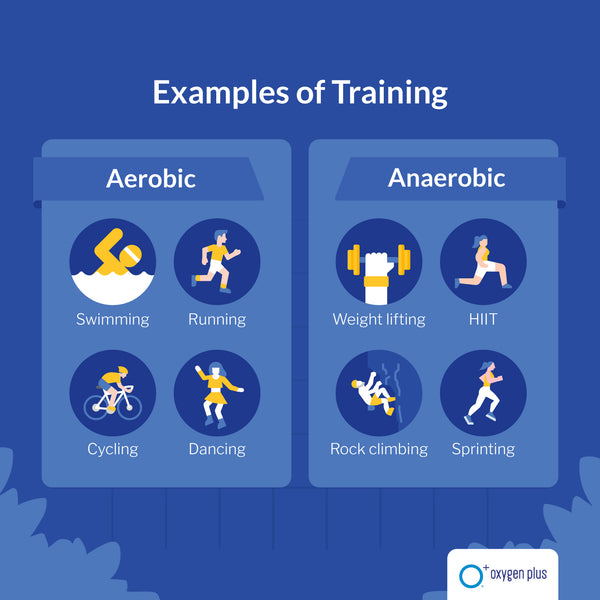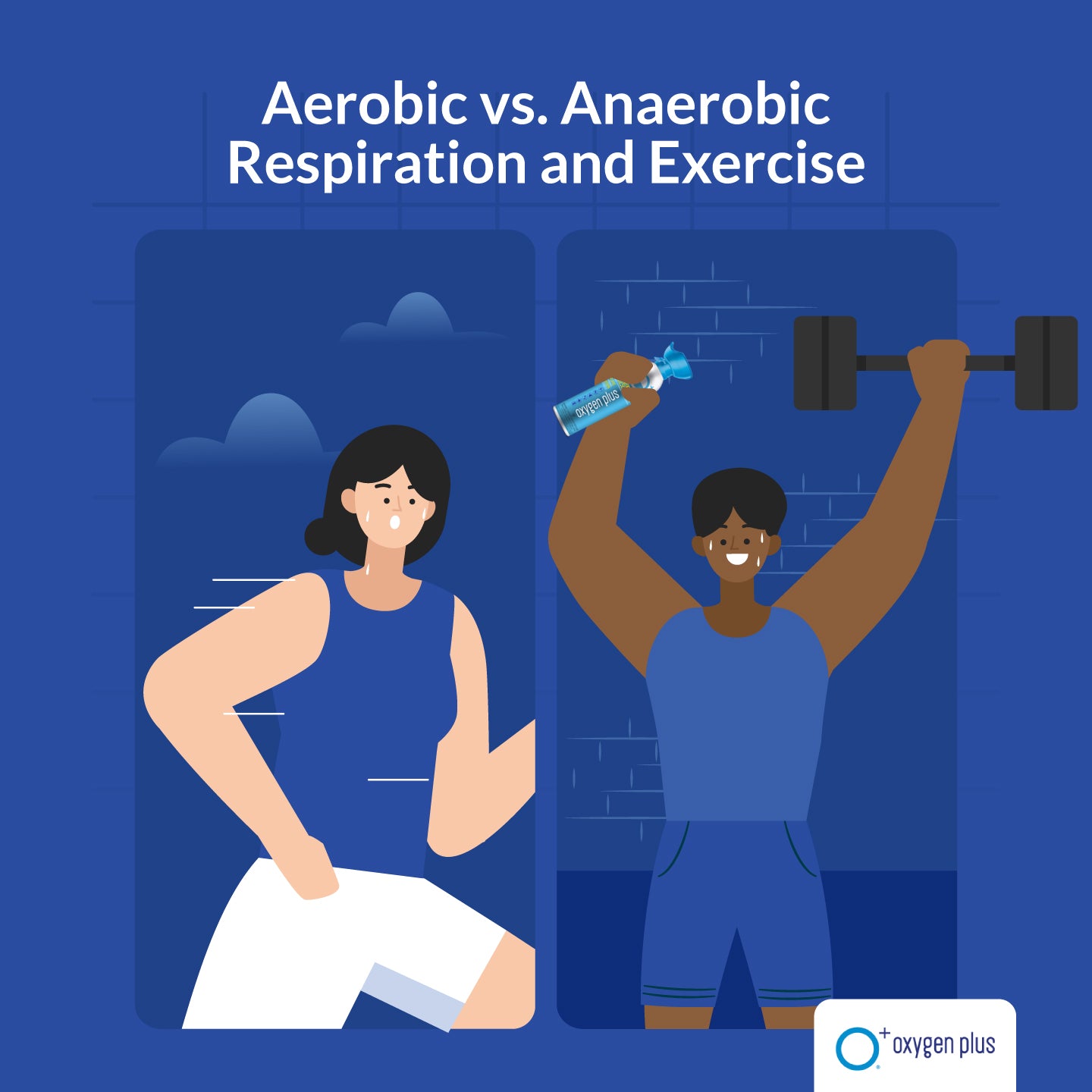Your Cart is Empty
Aerobic and anaerobic respiration are two processes that involve the breaking down of glucose molecules to produce our body’s energy. Oxygen is an essential element in aerobic and anaerobic respiration in the body, and ensuring normal, healthy oxygen levels can help improve overall performance, increase endurance and speed up recovery time. If you’re a serious athlete or just want to enhance your workout routine, understanding the processes behind aerobic and anaerobic respiration can help you better understand how and when you can use recreational oxygen to optimize your performance, endurance and recovery during any kind of exercise.

Respiration is a chemical reaction that takes place in all human cells and most other organisms. Respiration is not the same as breathing, the scientific name of breathing is ventilation. Respiration releases energy stored in glucose, and without this crucial process, human cells would not survive. There are two types of respiration: aerobic respiration and anaerobic respiration.
Human cells mostly engage in aerobic respiration, unless there is a lack of oxygen, at which point they switch to anaerobic respiration.
Respiration takes place in mitochondria, which are located in the cytoplasm – the gelatinous liquid that fills the inside of a cell. Cells that require more energy, such as sperm cells that swim or muscle cells that contract and relax, possess a higher number of mitochondria.
Aerobic respiration is the process which uses oxygen to break down glucose in order to produce energy. This process occurs within the mitochondria, cells responsible for providing the energy that powers our muscles and other bodily functions. During aerobic respiration, oxygen is consumed steadily, which in reaction produces carbon dioxide, followed by ATP (adenosine triphosphate), which is created as a result of the breakdown of glucose molecules. Aerobic respiration is used for activities that require moderate intensity and can be sustained for an extended period of time, such as walking, jogging and swimming.
Anaerobic respiration is the process by which glucose is broken down to produce energy, without the use of oxygen. The process of anaerobic respiration occurs within the cytoplasm of cells, and, unlike aerobic respiration, it produces lactic acid as a by-product. Because of this, anaerobic respiration can only be sustained for a short period of time and is used for activities that require intense energy output such as sprinting, weightlifting and high-intensity interval training (HIIT).
Aerobic respiration is activated when the body needs to produce energy in order to sustain a moderate intensity activity for an extended period of time. Activities such as jogging, cycling, and swimming are examples of activities that activate aerobic respiration.
In athletic contexts, anaerobic respiration is activated when the body needs to quickly produce energy in order to perform an intense activity. Examples of activities that activate anaerobic respiration are sprinting, weight-lifting, and high-intensity interval training (HIIT). During intense physical activity, the cells in your body may experience a shortage of oxygen, leading to a shift from aerobic respiration to anaerobic respiration.
After completing vigorous exercise, you may experience continued deep and rapid breathing for a brief period. This is called excess post-exercise oxygen consumption (EPOC), also known as an oxygen debt. During this process, lactic acid interacts with oxygen to create carbon dioxide and water, and releases the remaining energy from the glucose.

Aerobic exercise increases the body’s capacity to use oxygen to produce energy, and is beneficial for strengthening the heart and lungs, improving overall fitness and burning fat.
Anaerobic exercise, on the other hand, is more intense and requires short bursts of energy that are generally not sustainable for long periods of time. This type of exercise increases muscular strength and power while also developing metabolic pathways.
Recreational oxygen, like Oxygen Plus (O+), can help with aerobic training by increasing oxygen availability, making it easier for the body to access and use oxygen during moderate exercise. This increase in available oxygen helps reduce fatigue, improve endurance, and increase overall performance.
Additionally, recreational oxygen can assist in anaerobic recovery by helping to reduce lactic acid buildup and speed up muscle recovery after intense exercise. The increased availability of oxygen also helps to reduce muscle soreness – so you can recover more quickly.
Recreational oxygen can provide a wide range of benefits for athletes, including improving mental focus and clarity. By understanding the differences between aerobic and anaerobic respiration and how recreational oxygen affects these processes, athletes can maximize their performance and feel like they can take on any athletic challenge. Revive your energy by breathing the portable O+ Biggi before, during and after vigorous exercise so you can think, feel and perform your best.
